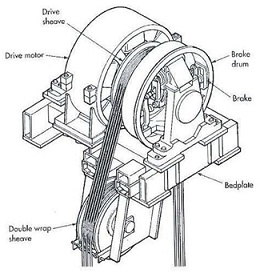Reference no: EM132840851
Unit 21 Electric Machines - Pearson Higher Nationals in Engineering
Learning Outcome 1: Assess the constructional features and applications of transformers
Learning Outcome 2: Analyse the starting methods and applications of the three-phase induction motors and synchronous machines
Learning Outcome 3: Investigate the types of generators available in the industry by assessing their practical application
Q1
Scenario:
You work for an electrical component supply company; you are to advise a customer seeking various transformers for a mountain hotel. They require distribution and control transformers.
i) Examine shell and core type transformer options with the customer. In your examination you are to include the design of the physical construction, winding configurations [step up, step down, and isolating], discuss the application for each type of transformer.
ii) Illustrate to the customer the various windings, connections (, how short circuit, and no-load testing is used to determine the losses and overall efficiency of the transformer. Show on an equivalent circuit the iron and copper losses.
iii) Listed in table 1 are specifications of the transformers that are in stock. Make an assessment on the efficiency of each to provide the customer with the best selections for a single-phase and a three-phase transformer.
Transformer A: (Single phase) 50KVA; Operating power factor= 0.85
lagging; Open Circuit test = 300W; Short Circuit test = 600W
Transformer B (Single phase) 80KVA; Operating power factor= 0.95
lagging; Open Circuit test = 250W; Short Circuit test = 500W
Transformer C (Three phase) 350KVA; Operating power factor=
0.78 lagging; Open Circuit test = 50W; Short Circuit test = 75W
Transformer D (Three phase) 450KVA; Operating power factor=
0.87 lagging; Open Circuit test = 300W; Short Circuit test = 400W
Table 1
a) Calculate the full load efficiency of all four transformers, A, B, C and D both single and three-phase.
b) You are required to assess and select one single phase and one three phase transformer to be used in the distribution system for the hotel. Select the most appropriate transformer for this application. You must refer to your calculations, giving proper justification for your choice. The load has been determined to be 300KVA.
Some considerations are, various losses, KVA ratings, operating power factor, distribution application requirements and actual value of efficiency.
Q2
Scenario:
The customer has returned, this time seeking a replacement electric motor for his project. He needs motors to operate a service lift (see figure 1). The lift operates at an altitude of 2200m above sea level and has a 3PH 230V supply.
i) Select the best type of motor design to operate the service lift and justify your answer.
ii) Analyse the different methods of starting induction motors and synchronous machines and suggest the best type of starter for the service lift motor.
iii) The original motor in the service lift had failed after a short time. Critically evaluate the efficiency of the motors that your company has in stock and make a recommendation for a new motor. See name plate for the original motor and the motors in your stock in table 2.
|
Motor Name plate specifications for lift motors.
|
|
|
Original motor
|
Motor Option 1
|
Motor Option 2
|
|
HP
|
20
|
30
|
25
|
|
Frequency
|
60
|
60
|
60
|
|
Current (A)
|
46/23
|
85
|
60/30
|
|
Voltage (V)
|
230/460
|
200
|
230/460
|
|
RPM
|
3520
|
3520
|
3525
|
|
PF
|
0.8
|
0.85
|
0.8
|
|
SF
|
1
|
1.5
|
1.2
|
|
Duty
|
30min
|
30min
|
30min
|
|
Thermal Protection
|
No
|
Yes
|
No
|
|
Phase
|
3
|
3
|
3
|
|
Poles
|
2
|
4
|
2
|
|
Ambient temperature (°C)
|
40
|
40
|
40
|
|
enclosure
|
Drip proof
|
Drip proof
|
Drip proof
|

Figure 1: Lift motor
Q3 Scenario:
Your company is opening a new branch, that sells generators. You must educate the staff in the types of generators available in industry by assessing their practical applications.
a) You must explain to them the types of generators (DC, induction and synchronous) and their construction.
b) A customer walks in and enquires about the best type of generator for the given loads in table 3. This is the perfect example to show your staff how to identify a generator for a specific application based on the available generators in table 4. Justify your selection based on the generator's characteristics.
Application:
|
Generator details:
|
Construction site
|
Continuous run
|
Gasoline
|
|
|
|
|
|
|
Required supply voltage
|
110/220V (60Hz)
|
Single phase
|
Runtime
|
|
Load
|
Qty
|
kW
|
Hrs
|
|
Arc Welders (220V 30A max)
|
2
|
3.2kW
|
3
|
|
Outdoor work lights 300W
|
2
|
0.6kW
|
6
|
|
Drills/grinders/saws 300W
|
6
|
1.8kW
|
5
|
|
Water pump 600W
|
1
|
0.6
|
8
|
c) Access the generators that the company has available as seen in table 4, to make the best possible choice of recommendation for the customer, taking generator efficiency into consideration. In your assessment include all necessary calculations, comparisons for your selection.
|
|
Generator 1
|
Generator 2
|
Generator 3
|
|
Rated output power
|
3.2kW
|
4kW
|
2.6kW
|
|
Rated Amps
|
33
|
43
|
29
|
|
Run time @ 50%
|
11
|
11
|
15
|
|
Alternator Type
|
Self-Excited
|
EBS
|
AUX
|
|
AVR type
|
SCR
|
FET
|
FET
|
|
Fuel type
|
Gasoline
|
Gasoline
|
Gasoline
|
|
PF
|
0.85
|
0.8
|
0.78
|
|
Field winding resistance (Ω)
|
100
|
80
|
120
|
Attachment:- Electric Machine.rar